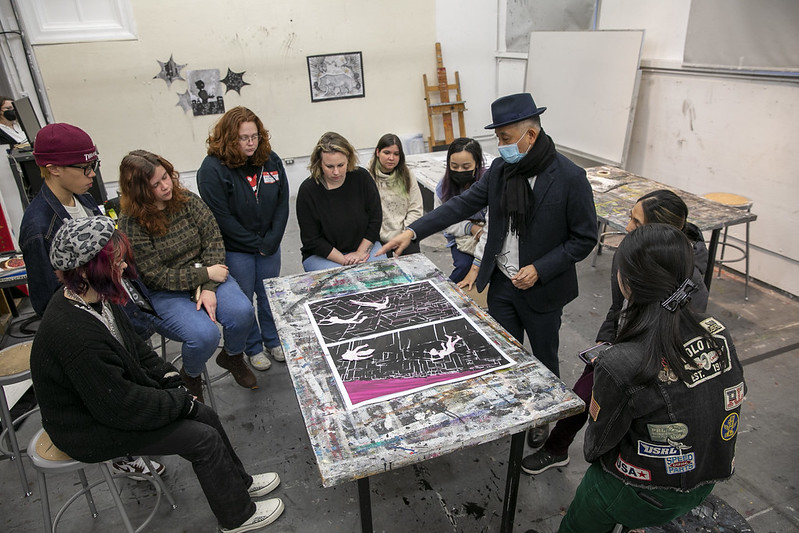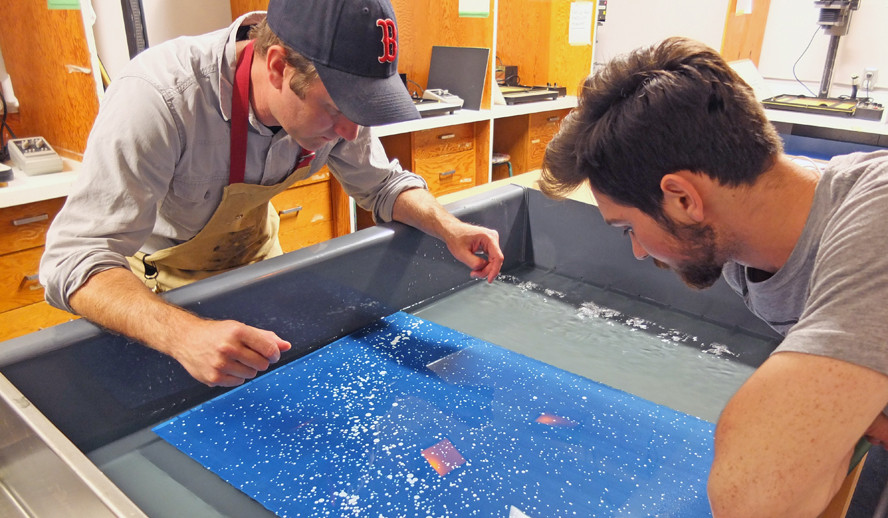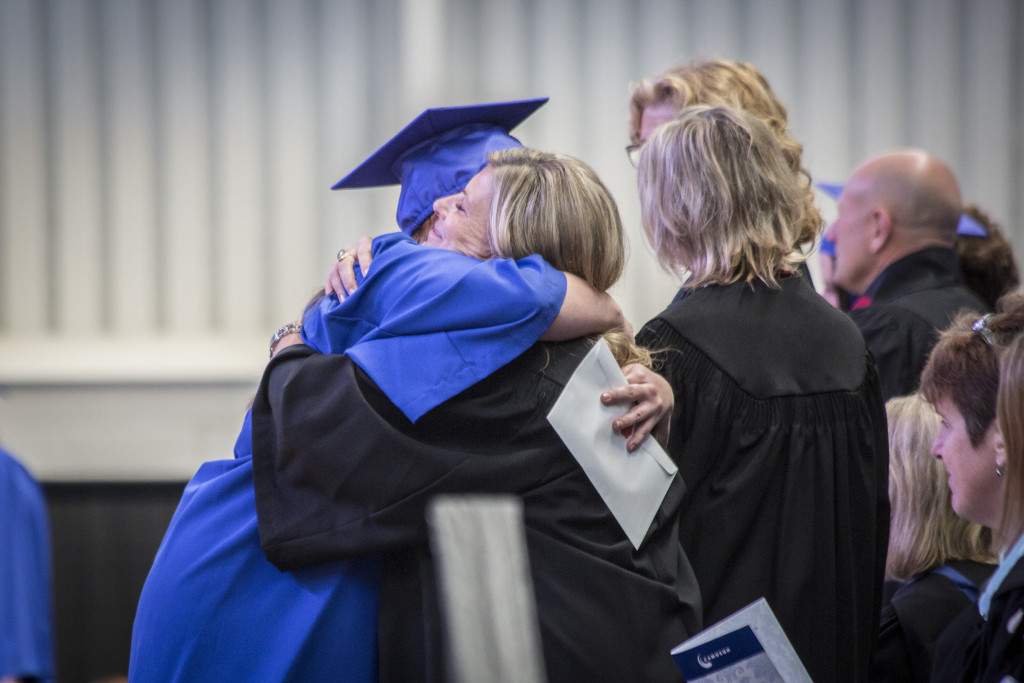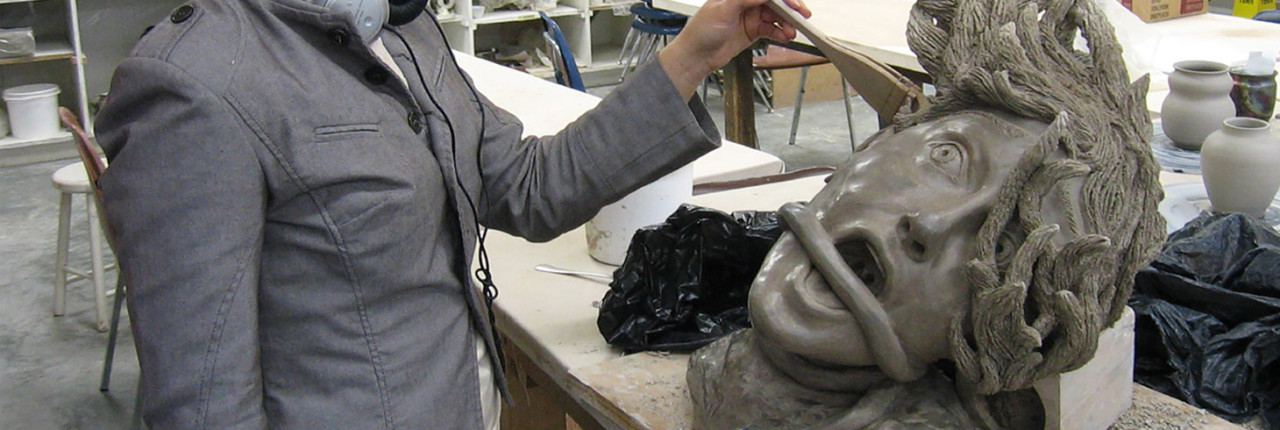As a prospective student for the Visual Arts Diploma program, it is a mandatory admission requirement to complete the online Information Session, following all the steps below.
You are required to take the quiz in step four, to assure us you have a good understanding of the material. If your score falls below 90%, you are required to take the quiz again to adjust your answers.
Step 1 - student expectations

Visual Arts
Our program began in 1974 and is a very popular waitlisted program. We are a small supportive department consisting of instructors and technologists, who are professional artists themselves.
Our program is designed as a full-time, two year intensive, interdisciplinary, foundation studio arts term of study that consists of four semesters. While we encourage full-time immersion, we also recognize that not all students are able to complete the program as full-time students, taking 5 classes each semester, over a four semester timeline, therefore we offer options and support students who are interested in part-time immersive studies. Part-time students may not need designation as Visual Arts students in order to pursue their studies. Additionally, all of the first and second year Visual Arts courses have space for non-program students (check prerequisite information in course descriptions) which waitlisted or non-program students can register for. Registered students, please contact an academic advisor and any prospective students can contact the department Chair in order to establish part-time options that can be designed to meet individual needs.
What's expected of you?
The Camosun Visual Arts Diploma program is a hands-on studio immersion program, however, we are also a post-secondary academic discipline wherein students will be required, in all studio and lecture courses, to research concepts and theories through readings, lectures, and written research assignments. Help is always available at the Writing Centre.
Our program creates and upholds safe interculturally aware space for critical experimentation, group dialogue, and exchange. In addition to scheduled program course work, homework, and events students are expected to actively engage in the local arts community by attending art openings, artist talks, exhibitions, and maintain self directed engaged awareness of national and international art accomplishments through periodicals, online affiliations, and critical social awareness.
All classes are held Monday to Friday from 9:30am-1:20pm with a break followed by a lab from 2:00-2:50pm. As well as limited evening classes Monday to Thursday from 3:30pm -7:20pm with a break followed by a lab from 8:00-8:50pm. Schedules are available on myCamosun. Both classes and labs are mandatory. In addition to class time, students typically spend 10-20 hours per week on homework.
Be Prepared
It is important for you to know, that your success is reliant upon your preparedness. We have learned that our successful students are those, who enter the program fully prepared: mentally, physically, emotionally, and financially. We strongly caution students from working more than 8 hours a week with a full course load. Student success is very important to all the members of our department, however, it starts with the students themselves.
Our program requires a great deal of hard work, on-going engagement with course work and community, and a resilient level of commitment that is sustained throughout the duration of the program. You will be immersed in a program dedicated to developing your skills in an environment where you are able to experiment, risk, and critically engage alongside a community of other likeminded emerging artists.
Advanced Learning
Studying art is challenging and your current concepts of art will be both challenged and expanded throughout this program. Your first year consists of two semesters (September to April) and includes thought-provoking courses in contemporary visual art foundations such as; Drawing, Printmaking, Painting, Graphic Design, Ceramics, Sculpture, 3D design, intro to Video and Photography, Modern Art History, and Visual Culture.
The second year, also two semesters (September to April), includes courses that build from the foundational skills and concepts introduced in year one challenging and advancing contemporary, conceptual, theoretical, and applied skills in: Ceramics, Performance Art (referred to as Intermedia in the video component), Creative Photography, Video and Film art, Art Theory, 2D Studio, 3D & 4D studio, Printmaking, Animation, and Professional Arts Management. Estimated tuition, additional costs and options for financial aid can all be found on the under Costs.
Step 2 - health and safety
Health and Safety
Health and Safety is a key concern in our program. The department’s role is to acknowledge hazards, provide appropriate training and supervision, and to assess student’s skills and abilities. Students must attend all course related training sessions, demonstrate appropriate skills and abilities, as well as observe all safety rules. Students must be prepared to safely work with numerous materials and within various conditions that will expose them to dust, chemicals, smoke, solvents, acids, and fumes (wood, metal, plastic, paint, stains, etc.). Students will be required to use many different tools (hand and power) including but not limited to: saws, sanders, drills, nailers, welders, cutters, shears, mixers, throwing wheels, kilns, etc. At times students will be required to work in loud environments as a result of machines, tools, and other potential noise sources.
We require all students to come prepared to work in these situations in advance of starting the program. Students who have allergies, respiratory conditions, or any other situation or condition that may affect their ability to work within these circumstances must consult their doctor prior to commencing studies in order to ensure their needs can be accommodated. All students who may require accommodation: mental, physical, health, or other, should connect with the Centre for Accessible Learning before starting our program to ensure that appropriate and reasonable supports and accommodation are in place before they begin their studies in Visual Arts.

Hazards in the Visual Arts
Sculpture
- Improper use of hand and stationary power tools: saws, sanders, drills, nailers, welders, etc.
- Exposure to dust and fumes from: wood, metal, plastics, paints, stains, and solvents
- Exposure to loud noises from: machines, tools, etc.
Printmaking
- Exposure to: acids, solvents, and other chemicals
- Injury from improper use of: cutters, shears, and other equipment
Pottery
- Exposure to dust from: clay and glazes
- Exposure to fumes and smoke from: kilns and various firing techniques
- Injury from improper use of: mixers, wheels, and other pottery equipment
Photography
- Exposure to: film, paper, and toning, chemicals
- Working in extremely low light environments
Film, Animation, & Design
- Injury from prolonged use of: video display monitors, computers, repetitive strain syndrome
Step 3 - after graduation
After Graduation
After being in our program, the careers our students have moved into are wide-ranging and have included: practicing artists, designers, animators, art educators, illustrators, film and theatre set designers, landscape designers, potters, filmmakers, entrepreneurs, hair stylists, photographers, and so on. What one can do with a Visual Arts Diploma is fairly unlimited and we are always excited to see where our students take themselves professionally and academically. Those who choose to pursue a BFA, in most cases, transfer into third year Studio Arts programs throughout B.C. and across Canada (UVic, UBC, Emily Carr, NSCAD, OCAD, Ryerson, Concordia, to name a few).

Step 4 - required student resource information
Required Student Resource Information
Applicants must open and review all of the following links, prior to writing the quiz:
